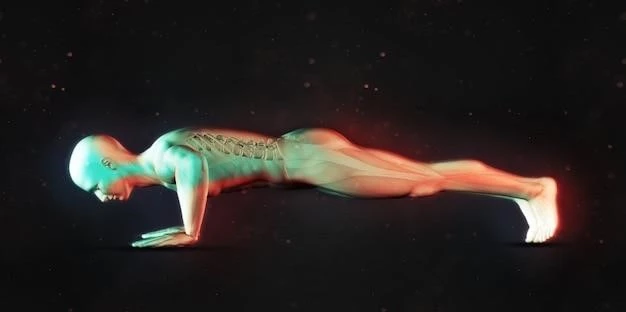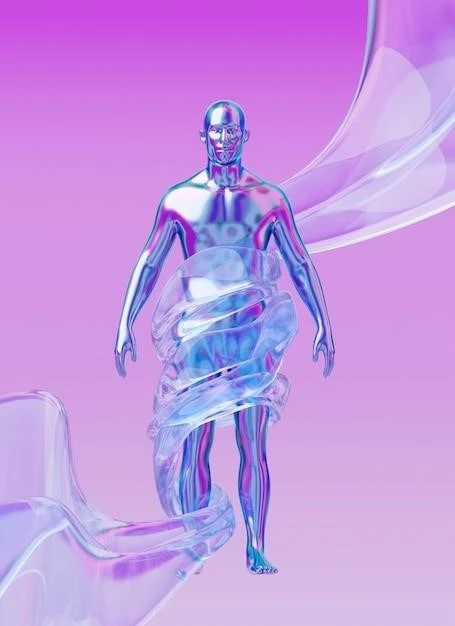The Art of Movement: Biomechanics and Human Performance
In the realm of human movement‚ where grace meets power and precision dictates outcome‚ lies the fascinating field of biomechanics. This discipline‚ a captivating fusion of biology and physics‚ delves into the intricate mechanics of human motion‚ unraveling the secrets behind athletic prowess and providing invaluable insights into injury prevention and rehabilitation.

Defining Biomechanics: The Science of Human Motion
Biomechanics‚ at its core‚ is the study of the human body as a mechanical system. It seeks to understand the forces acting upon and generated within the body during movement‚ and how these forces influence performance and injury risk. By applying the principles of physics and engineering‚ biomechanists analyze the interplay of muscles‚ bones‚ joints‚ and external forces to decipher the complexities of human movement.
The Pillars of Biomechanics: Key Concepts
Several fundamental concepts underpin the field of biomechanics‚ providing the framework for understanding human motion:
- Kinematics: This branch of biomechanics focuses on describing movement without considering the forces involved. It encompasses variables such as displacement‚ velocity‚ and acceleration‚ providing a quantitative assessment of how the body moves through space and time.
- Kinetics: Delving deeper into the causative factors of motion‚ kinetics examines the forces that produce‚ arrest‚ or modify movement. This includes both internal forces generated by muscles and external forces like gravity‚ impact forces‚ or resistance from the environment.
- Newton’s Laws of Motion: Forming the cornerstone of classical mechanics‚ Newton’s laws provide the fundamental principles governing all motion. His first law‚ inertia‚ states that an object at rest will stay at rest‚ and an object in motion will continue in motion at a constant velocity unless acted upon by a net force. The second law‚ acceleration‚ reveals the relationship between force‚ mass‚ and acceleration (F=ma). Lastly‚ the third law‚ action-reaction‚ posits that for every action‚ there is an equal and opposite reaction.
Biomechanics in Action: From Sports to Rehabilitation
The applications of biomechanics extend far beyond the research laboratory‚ profoundly impacting various fields:
1. Sports Performance Enhancement:
Biomechanics plays a pivotal role in optimizing athletic performance by identifying and refining movement techniques for enhanced efficiency and power output. By analyzing an athlete’s form‚ biomechanists can pinpoint areas for improvement‚ whether it’s increasing a sprinter’s stride length‚ perfecting a swimmer’s stroke‚ or maximizing a golfer’s swing mechanics. This data-driven approach allows coaches and athletes to make informed decisions‚ leading to enhanced performance and a competitive edge.
2. Injury Prevention and Rehabilitation:
Understanding the biomechanical factors contributing to injuries is crucial for developing effective prevention strategies. By identifying movement patterns or external forces that increase stress on joints and tissues‚ biomechanists can develop interventions to mitigate these risks. This might involve modifying training techniques‚ recommending specific equipment‚ or designing personalized exercise programs to address muscular imbalances and improve movement mechanics. In the realm of rehabilitation‚ biomechanics guides the development of targeted exercise programs to restore strength‚ flexibility‚ and functional movement patterns following injury.
3. Ergonomics and Occupational Health:
Biomechanics plays a vital role in designing safer and more efficient workplaces by analyzing the interaction between workers and their environment. By studying postures‚ repetitive motions‚ and force exertions involved in various occupations‚ ergonomists can identify risk factors for musculoskeletal disorders and recommend modifications to workstations‚ tools‚ or work practices to reduce the likelihood of injury. This proactive approach promotes worker well-being‚ reduces healthcare costs‚ and enhances overall productivity.
Biomechanical Analysis: Tools of the Trade
To unravel the complexities of human motion‚ biomechanists employ a range of sophisticated tools and techniques:
- Motion Capture: High-speed cameras track reflective markers strategically placed on the body‚ recording movement with remarkable precision. This technology provides a detailed three-dimensional representation of motion‚ allowing for in-depth analysis of joint angles‚ velocities‚ and accelerations.
- Force Platforms: Embedded in the ground or within specialized equipment‚ force platforms measure the forces exerted by the body during movement. This data provides insights into ground reaction forces‚ balance control‚ and the forces involved in activities like jumping‚ landing‚ and cutting maneuvers.
- Electromyography (EMG): This technique measures the electrical activity produced by muscles during contraction. By placing electrodes on the skin overlying specific muscles‚ EMG provides insights into muscle activation patterns‚ timing‚ and force production‚ aiding in the understanding of how muscles contribute to movement and coordination.

The Future of Biomechanics: Advancements and Innovations
As technology continues its rapid evolution‚ the field of biomechanics is poised for continued growth and exciting new applications:
- Wearable Sensors: The advent of sophisticated wearable sensors‚ such as accelerometers and gyroscopes‚ has revolutionized biomechanical data collection. These devices allow for real-time monitoring of movement outside the laboratory‚ providing valuable insights into daily activity levels‚ gait patterns‚ and movement disorders.
- Computational Modeling: Advanced computer simulations and modeling techniques allow biomechanists to create virtual representations of the human body and study movement in unprecedented detail. These models facilitate the exploration of various movement scenarios‚ optimize prosthetic design‚ and predict injury risk with increasing accuracy.
- Artificial Intelligence: The integration of artificial intelligence (AI) into biomechanics holds immense promise for automating data analysis‚ identifying subtle movement patterns‚ and developing personalized interventions. AI-powered algorithms can sift through vast datasets‚ uncovering hidden relationships and providing invaluable insights to enhance performance and prevent injuries.
Conclusion: Biomechanics ⎯ An Ever-Evolving Frontier
The art of movement‚ meticulously deconstructed and analyzed through the lens of biomechanics‚ reveals the intricate symphony of forces‚ levers‚ and coordinated actions that enable human performance. From shattering athletic records to regaining mobility after injury‚ the principles of biomechanics touch every aspect of human movement. As technology continues to advance‚ we can anticipate even more groundbreaking discoveries and applications‚ further solidifying biomechanics as an indispensable tool for understanding‚ optimizing‚ and enhancing human potential.










